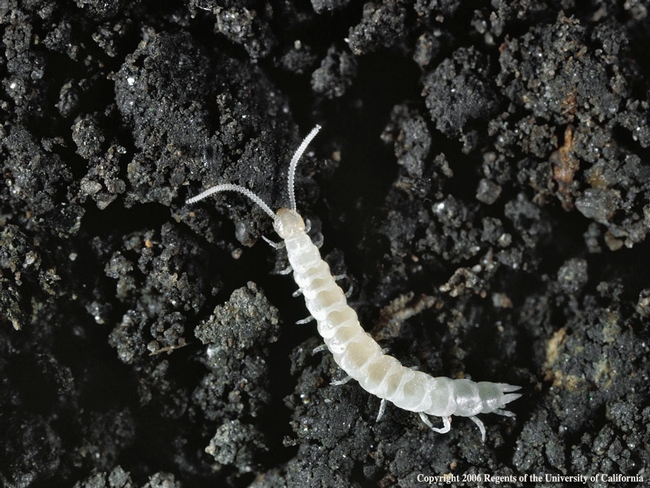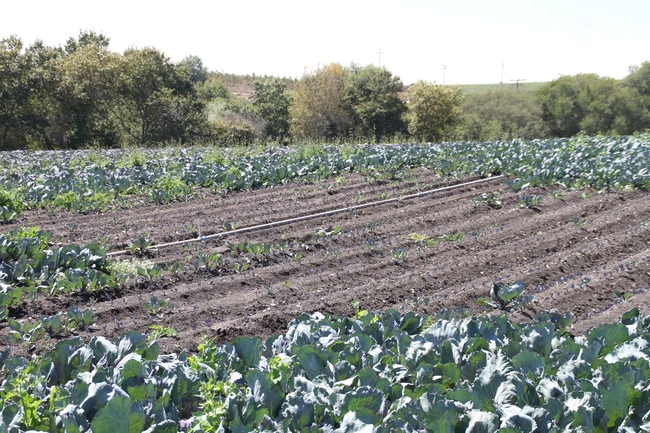The garden symphylan (Scutigerella immaculata) (Figure 1), a white, highly mobile, centipede-like, 1/4 inch long soil arthropod, is a serious soil pest of several high-value crops in the Central Coast of California such as lettuce, strawberry, broccoli, cauliflower, artichoke and celery. The garden symphylan feeds on roots of both direct-seeded and transplanted crops alike causing severe stunting and plant mortality. Besides feeding on the roots, they also survive feeding on organic matter, and other soil dwelling fungi. The garden symphylans use the channels created by other soil organisms such as earthworms for vertical and lateral movement through the soil profile. Their seasonal movement in the soil is also influenced by soil moisture, and temperature. Incidence of garden symphylan infestation is mostly reported in heavier or clay soils with higher organic matter content than lighter or sandy soils. The garden symphylans spend their entire life in the soil and are well adapted to the subterranean habits. They lack eyes but have long antennae and thousands of sensory hairs on the body, which possibly help taste and feel the surroundings.
The garden symphylans are primarily managed using preventative insecticide application, although other tactics such as crop rotation, planting less susceptible crops, flooding the field, reduced tillage, and conservation of beneficial organisms have been suggested. Success and effectiveness of these non-chemical tactics were constrained by several factors such as lack of fit to the current production practices, susceptible crops being grown, varied topography, and enormous population size.
It is important to remember that garden symphylans are very difficult to manage because of their behaviors such as high mobility, and their adaptations to the soil conditions. They can move to deeper soil layers when conditions are not favorable in the upper soil layers (such as high temperature or low water content). Often, garden symphylans aggregate in high densities in certain spots in the field and the damage is concentrated in those spots (Figure 2). Thus, it is very difficult to predict their incidence and plant damage in the field.
One strategy to manage garden symphylans is to determine which insecticides would repel garden symphylans in the soil. This will at least provide some control until the seedling establish in the soil. Studies were conducted to establish relative efficacy of insecticides against garden symphylan based on repellency behavior and how many died. Based on the studies, Belay, Vydate, Mustang, Lorsban, Mocap, Aza-direct Leverage and Torac showed signs of repellency to garden symphylans. Aza-direct is the only organically approved insecticide that elicited repellency. The insecticides, Capture, Vydate, Belay, and Mustang caused 44 to 95% garden symphylan dead. 100% of the garden symphylans were killed when Torac was used. Torac is not registered on any crops at this moment. These studies provide guidelines on efficacy of insecticides against garden symphylans. For further reading please click the link below to access the published article.

